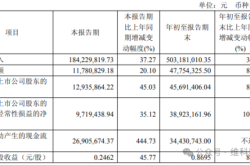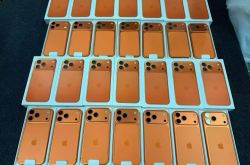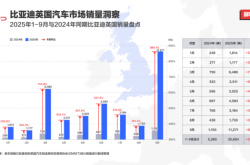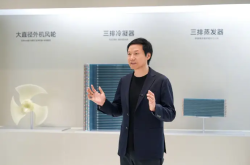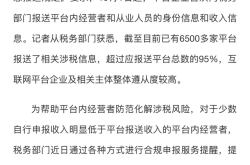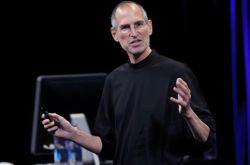Enhancing Automakers' 'Large Models' with Integration into 'One AI Network'
![]() 03/17 2025
03/17 2025
![]() 475
475
In today's automotive landscape, where intelligence and connectivity are driving the industry forward, large models have emerged as a strategic battleground for automakers. Many have invested heavily in developing these models to enhance autonomous driving and smart cabin functionalities, aiming to deliver a more intelligent and convenient travel experience. However, isolated large models often falter in the face of complex and dynamic real-world traffic scenarios. Automakers confront a fundamental dilemma: the pressing need for intelligent upgrades versus the practical challenges of implementing V2X cloud collaboration.
Currently, autonomous driving solutions from Tesla's FSD, Huawei's ADS, and XPeng's XNGP are confined to 'single-vehicle intelligence,' relying on cameras and LiDAR for perception within a 200-meter radius. When confronted with extreme weather, sudden obstacles, or complex intersections, these systems may abruptly 'lose sight.' The question arises: how can automakers make their 'large models' smarter and effectively leverage V2X cloud collaboration? The answer may reside in 'One AI Network.'
Pain Points: Automakers' 'Three Mountains'
1. Overcoming Long-Tail Scenarios: 99% of Algorithms Struggle with 1% of Extreme Problems
Tesla's FSD misidentifying lanes in heavy rain or a new-energy vehicle colliding with a short post in a parking lot highlight the Achilles' heel of single-vehicle intelligence: AI models trained on historical data struggle to manage the myriad long-tail scenarios in the real world. To achieve L4 autonomous driving, automakers must overcome the 'perception blind spot.'
2. Data Silos: Cars, Roads, and Clouds Communicate in Different Languages
Most smart transportation systems in cities are still in the 'device stacking' phase, with cameras, traffic lights, and 5G base stations operating independently and using inconsistent data formats, making direct access challenging for automakers. One automaker lamented, '90% of the roadside data we receive is invalid noise.'
3. High Computing Power Costs: An 'Unbearable Burden' for Automakers
Automotive chips boast computing power of up to thousands of TOPS, but 90% of this power is wasted on repetitive perception tasks. Offloading some tasks to roadside edge nodes could reduce costs by 70%, but automakers and local governments are at an impasse over who will foot the bill.
Breakthrough: MogoMind's 'One AI Network' Logic
Step 1: Connecting Data 'Meridians and Governing Vessels'
- Roadside: AI digital road base stations integrate data from cameras, LiDAR, and meteorological sensors.
- Vehicle-end: L4 autonomous driving vehicles upload high-precision environmental information in real-time.
- Cloud-end: MogoMind's large model fuses multimodal data to construct a 'digital twin transportation' system, offering automakers a 'God's-eye view.'
Step 2: From 'Rule-Driven' to 'Cognition-Driven'
While traditional V2X collaboration relies on preset rules (like fixed traffic light timings), MogoMind achieves dynamic optimization through reinforcement learning. For automakers, this means vehicles receive real-time global decisions: the cloud pushes the optimal path, edge nodes assist in complex intersection negotiations, and the vehicle-end only needs minor adjustments.
Step 3: Lightweight Field-end, Empowering Vehicle-end
- Vehicle-end: Retains core perception and decision-making capabilities to ensure safety in emergencies.
- Field-end: Deploys low-cost cameras and communication units to provide vehicles with information like blind spot warnings.

Business Model: Who Pays for 'One AI Network'?
To Automakers: Data Subscription + Algorithm Empowerment
- API Calls: Charges an annual fee based on the number of vehicles, providing real-time traffic predictions and remote sensing data.
- Deep Customization: Trains vertical scenario AI models for automakers (e.g., autonomous driving in mining areas) and shares revenue based on performance.
To Governments: From 'Project-Based' to 'Revenue Sharing'
- Governments provide permits for roadside equipment deployment.
- Enterprises bear 80% of the construction costs and obtain revenue sharing through V2X data operations (e.g., traffic management optimization fees and advertising value-added services).
Ecosystem Co-construction: A 'Triangular Balance' Among Automakers, Governments, and Users
- Automakers: Reduce R&D costs and increase product premium.
- Governments: Optimize urban governance and obtain data assets.
- Users: Enjoy safer and more efficient travel services.
Future: AI Network as an 'Essential Option' for Automakers
While Tesla persists with the 'pure vision route,' Chinese automakers have chosen a different path: breaking through the technical ceiling with V2X cloud collaboration. 'One AI Network' essentially creates a flywheel where 'the more data used, the smarter the algorithms become': more automakers connect → richer driving scenario data → more accurate AI models → higher user stickiness. By 2030, this network could cover over 100 cities nationwide, becoming the 'water, electricity, and coal' infrastructure for autonomous driving. For automakers, refusing to connect may mean being eliminated, as users will not pay for a smart car that 'cannot see 2 kilometers ahead.'

